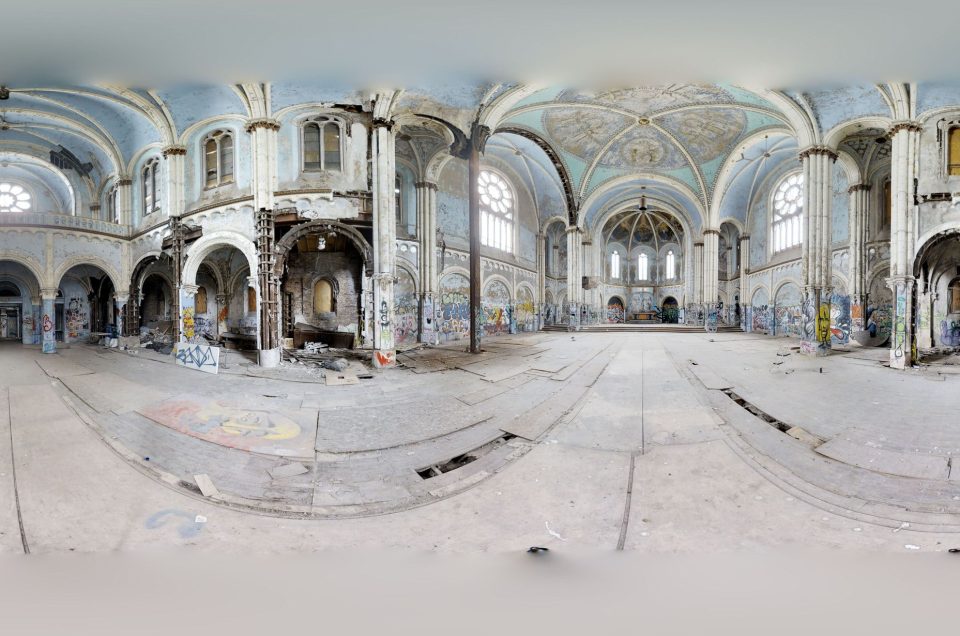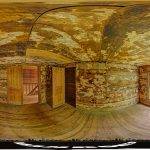McIntosh Sugar Works
Embark on a captivating journey as you step into the past with a 360-degree panoramic virtual tour of the McIntosh Sugar Works in Georgia. Within this immersive experience, you’ll find thirteen stunning panoramic images that invite you to leisurely traverse the hallowed grounds of this historic site. Allow yourself the opportunity to delve into the rich tapestry of history that surrounds the McIntosh Sugar Works as you explore its remarkable remnants.
Click here to view it in fullscreen.
Unveiling the Mystique of McIntosh Sugar works: A Journey Through Time
Introduction
Nestled in the serene landscape near St. Marys, Georgia, the McIntosh Sugar works stands as a silent sentinel to a bygone era. This historic site, built in the late 1820s by John Houstoun McIntosh, is not just an architectural marvel but also a significant chapter in the story of southeastern plantation agriculture. In this blog post, we will explore the ruins of McIntosh Sugar works, an abandoned yet captivating landmark that continues to intrigue historians, architects, and visitors alike.
The Historical Significance of McIntosh Sugar works
The McIntosh Sugar works is a prime example of tabby concrete architecture, a style that is both unique and historically significant. Located at 3600 Charlie Smith Sr. Highway at Georgia Spur 40, just six miles north of St. Marys, these ruins, also known as the Tabby Ruins, represent an important industrial component of the region’s plantation agriculture.
John Houstoun McIntosh’s journey began after the War of 1812 when he started planting in Camden County, Georgia. Establishing his residence at Mariana Plantation on the St. Marys River, McIntosh expanded his holdings by purchasing two smaller plantations in 1819, which he renamed New Canaan. By 1829, following a design recommended by Thomas Spalding in 1825, the McIntosh mill was already operational, marking the beginning of a new era in sugar production.
McIntosh Sugar works: A Pillar of the Local Economy
The McIntosh Sugarworks played a pivotal role in the local economy, providing employment opportunities and contributing significantly to the region’s agricultural development. Sugar cane, a lucrative crop for large plantations, was the mainstay of McIntosh Sugar works. The sugar produced here catered not only to local markets but also reached consumers far and wide.
The Architectural and Operational Intricacies
The ruins of McIntosh Sugar works reveal the complexities of sugar processing in the 19th century. The standing tabby walls of the sugarhouse outline a rectangular structure with three distinct rooms aligned in a row, each integral to the sugar production process. The eastern room housed the mill for crushing cane, the middle room was dedicated to boiling and clarifying the juice into syrup, and the final room was where this syrup transformed into granular sugar.
The Legacy and Transformation Post-McIntosh
After John Houstoun McIntosh’s death in 1836, New Canaan underwent several transformations. Sold to Caroline Hallowes in 1840, the plantation was renamed Bollingbrook. Throughout the Civil War, it continued sugar production and even operated as a starch factory, producing arrowroot starch in large quantities.
The Mystique of the Abandoned Ruins
For years, a myth persisted that these tabby ruins were remnants of an old Spanish mission. However, the truth of McIntosh Sugar works, along with other tabby sugarhouses like the one at Elizafield Plantation on St. Simons Island, paints a different picture of the region’s history.
McIntosh Sugar works Today: A Historical Beacon
Today, the McIntosh Sugarworks stands as a testament to the past. These abandoned ruins offer a glimpse into a bygone era, reminding us of the economic, social, and cultural history that shaped the region. The preservation of McIntosh Sugar works is crucial, ensuring that the stories and lessons it holds are not lost to the sands of time.
Conclusion
The McIntosh Sugar works is more than just an abandoned site; it is a historical treasure trove that continues to fascinate and educate. As we walk through its ruins, we are transported back in time, gaining insights into the complexities and intricacies of plantation life and sugar production. It stands as a beacon, urging us to explore and appreciate our rich and diverse history.
If you liked this blog post, you might like the Universal Healing Center and Chapel in Florida, Ha Ha Tonka Castle Ruins in Missouri, or the Grover Industries Factory in North Carolina.

A 360-degree panoramic image captured at the abandoned McIntosh Sugar Works ruins in Georgia.
Do you have 360-degree panoramic images captured in an abandoned location? Send your images to Abandonedin360@gmail.com. If you choose to go out and do some urban exploring in your town, here are some safety tips before you head out on your Urbex adventure.
Unlock the secrets of exploration by diving into precise GPS data available exclusively for an array of hidden gems and hundreds of other captivating sites, all within our members’ section. By investing in a Gold Membership, you’re not just gaining access; you’re securing a key to a vast, global archive of abandoned, untouched, and mysterious locations waiting to be discovered. Embark on your adventure with confidence, knowing every corner of the world can be within your reach. Don’t just observe—explore, discover, and claim the extraordinary journey that lies ahead with our treasure trove of world secrets. Subscribe now and transform the way you see the world!
Equipment used to capture the 360-degree panoramic images:
- Canon DSLR camera
- Canon 8-15mm fisheye
- Manfrotto tripod
- Custom rotating tripod head
If you want to start shooting 360-degree panoramic images, you might want to look onto one-click 360-degree action cameras.
Click on a state below and explore the top abandoned places for urban exploring in that state.






